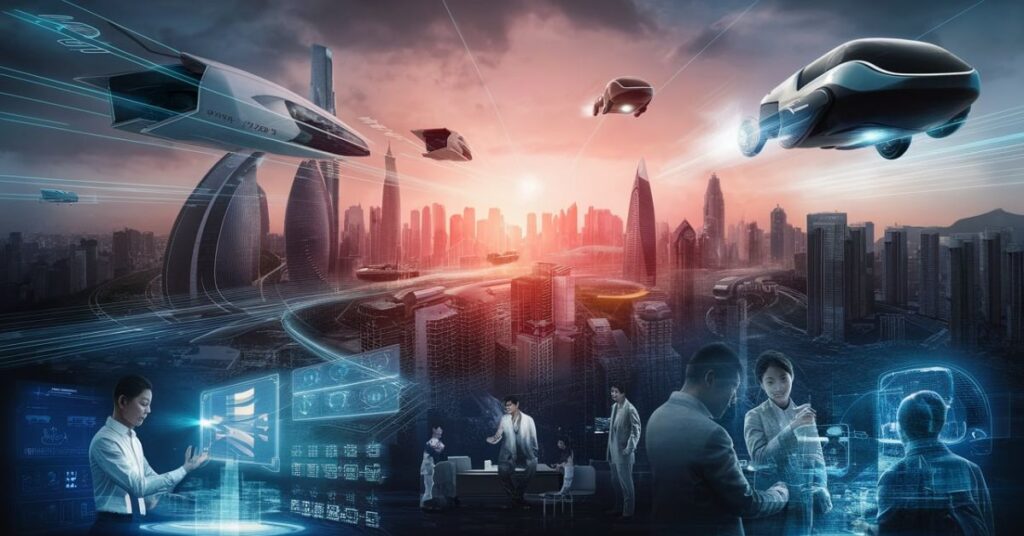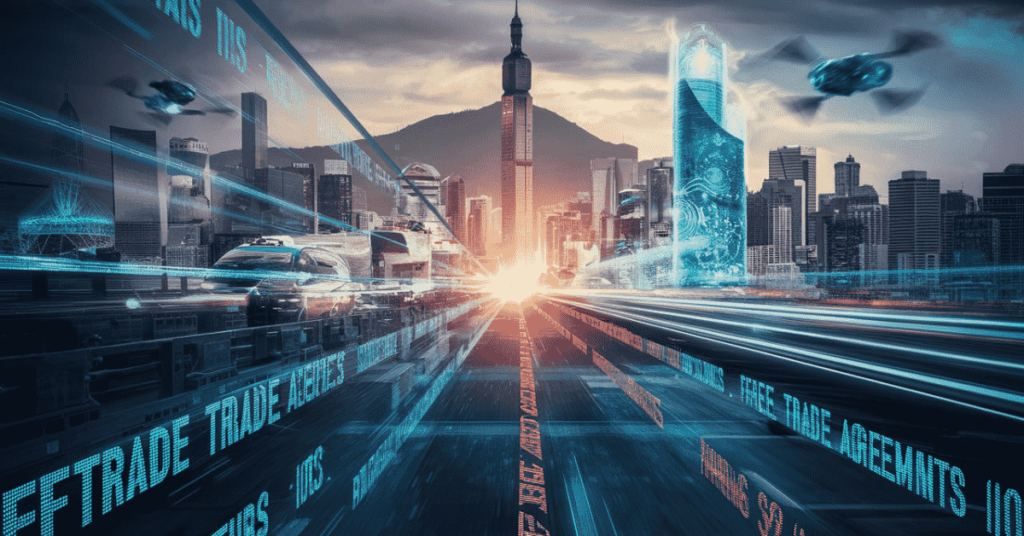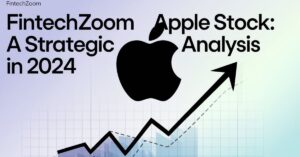In the fast-paced world of global economics, Asia has emerged as a powerhouse of innovation and growth. The technological updates in the FTAsiaEconomy have been nothing short of revolutionary, reshaping industries, lifestyles, and economic paradigms across the continent. As we delve into this digital renaissance, we’ll explore how these advancements are not just changing the game but rewriting the rules entirely. Technological Updates FTAsiaEconomy.
Introduction
Picture this: a bustling metropolis where autonomous vehicles glide silently through streets lined with smart billboards, while drones buzz overhead delivering packages. This isn’t a scene from a sci-fi movie; it’s the reality unfolding in many Asian cities today. The digital revolution in Asia has been swift and transformative, with technological updates in the FTAsiaEconomy acting as the catalyst for unprecedented change.
From the neon-lit streets of Tokyo to the tech parks of Bangalore, Asia is embracing the future with open arms. But what exactly is driving this technological juggernaut? Let’s dive in and explore the symbiotic relationship between technology and the FTAsiaEconomy.
Technology, FTAsiaEconomy, and Their Symbiotic Role

The bond between technology and the FTAsiaEconomy is akin to a perfectly choreographed dance, each partner complementing and enhancing the other’s movements. This relationship isn’t new; it’s been evolving for decades. Technological Updates FTAsiaEconomy.
Historical context:
- 1960s-1970s: Japan’s electronics boom
- 1980s-1990s: South Korea and Taiwan become semiconductor powerhouses
- 2000s-present: China’s rise as a tech manufacturing and innovation hub
Today, Asia isn’t just adopting technology; it’s creating it. Countries like China, Japan, and South Korea are no longer content with being the world’s factory. They’re now the architects of cutting-edge innovations that are reshaping global markets.
“Asia is not just a consumer of technology; it’s become the primary producer of it.” – Dr. Parag Khanna, Global Strategy Advisor
Technological Updates FTAsiaEconomy: Most Important Technologies and Their Impacts
Let’s break down the key technological updates that are revolutionizing the FTAsiaEconomy:
Digital Transformation
The digital wave has swept across Asia with tsunami-like force. E-commerce giants like Alibaba and JD.com have transformed retail, while digital banking solutions are bringing financial services to millions of previously unbanked individuals.
Case Study: Alibaba’s Impact on Chinese Retail
- Founded: 1999
- Market Cap (2023): Over $230 billion
- Active Users: 1.3 billion globally
- Impact: Revolutionized e-commerce, logistics, and digital payments in China
Alibaba’s success story isn’t just about online shopping; it’s a testament to how technological updates in the FTAsiaEconomy can create entirely new ecosystems of growth and innovation.
Related Post: Technological Updates FTAsiaEconomy
5G and Connectivity
The rollout of 5G networks across Asia is like giving the economy a shot of adrenaline. With speeds up to 100 times faster than 4G, 5G is enabling everything from remote surgeries to smart manufacturing. Technological Updates FTAsiaEconomy.
5G Adoption in Asia:
| Country | 5G Subscribers (2023) | Expected Growth by 2025 |
|---|---|---|
| China | 500 million | 800 million |
| Japan | 50 million | 150 million |
| South Korea | 30 million | 45 million |
These numbers aren’t just statistics; they represent a seismic shift in how businesses operate and how consumers interact with technology.
Artificial Intelligence and Machine Learning
AI and ML are the twin engines propelling the FTAsiaEconomy into the future. From chatbots handling customer service to AI-powered supply chain optimization, these technologies are boosting efficiency and creating new possibilities.
AI Applications in Asia:
- Healthcare: AI-assisted diagnostics and drug discovery
- Finance: Algorithmic trading and fraud detection
- Manufacturing: Predictive maintenance and quality control
- Agriculture: Precision farming and crop yield prediction
The Historical Role of Technology in Shaping the World

To understand the impact of technological updates on the FTAsiaEconomy, we need to zoom out and look at the bigger picture. Throughout history, technological leaps have been the driving force behind economic revolutions.
- First Industrial Revolution: Steam power and mechanization
- Second Industrial Revolution: Electricity and mass production
- Third Industrial Revolution: Computers and automation
- Fourth Industrial Revolution: AI, IoT, and cyber-physical systems
Asia’s unique position in this latest revolution lies in its ability to leapfrog older technologies. Many Asian countries have bypassed traditional development stages, jumping straight into the digital age. Technological Updates FTAsiaEconomy.
The Role of Technological Innovation in Shaping Economic Growth and Welfare
Innovation isn’t just about cool gadgets; it’s the lifeblood of economic growth. In the FTAsiaEconomy, technological innovation is:
- Driving productivity gains
- Creating new industries and job opportunities
- Improving quality of life through smart city initiatives
However, it’s crucial to address the digital divide. As some surge ahead, others risk being left behind. Governments across Asia are implementing programs to ensure digital literacy and access for all citizens.
The Impact of Technological Updates on the FTAsiaEconomy
The ripple effects of technological updates in the FTAsiaEconomy are felt far and wide:
- Disruption of traditional industries: Taxi services upended by ride-sharing apps, hotels challenged by short-term rental platforms
- Creation of new markets: Virtual reality tourism, personalized medicine based on genetic data
- Shifts in economic power: Rise of tech hubs in previously overlooked regions
These changes aren’t just reshaping industries; they’re redrawing the economic map of Asia.
Economic Growth and Productivity
The numbers speak for themselves. Technological adoption has supercharged productivity across the FTAsiaEconomy:
- GDP Growth: Tech sectors in countries like China and India are growing at 2-3 times the rate of other industries
- Productivity Gains: Automation and AI have increased manufacturing productivity by up to 30% in some Asian countries
Compared to Western economies, Asia’s tech-driven growth is often more rapid and disruptive, fueled by large, tech-savvy populations and supportive government policies.
Development and Business Ventures
The tech startup ecosystem in Asia is flourishing, with cities like Singapore, Bangalore, and Shenzhen becoming global innovation hubs.
Venture Capital Trends in Asia:
- 2020: $74 billion invested in Asian startups
- 2021: $165.1 billion, up 123% from previous year
- 2022: Despite the global downturn, Asia saw $163 billion in tech investments
Governments are playing a crucial role too. Initiatives like Singapore’s “Smart Nation” and South Korea’s “Digital New Deal” are creating fertile ground for tech entrepreneurship.
Employment and Skills Development
The technological updates in the FTAsiaEconomy are reshaping the job market:
- Job Creation: Millions of new roles in AI, data science, and cybersecurity
- Skills Gap: Urgent need for reskilling and upskilling programs
- Gig Economy: Platforms like Grab and GoJek creating flexible work opportunities
As traditional jobs evolve or disappear, the challenge lies in ensuring that workers are equipped for the jobs of tomorrow. Technological Updates FTAsiaEconomy.
Future Prospects and Challenges
Opportunities
The future of the FTAsiaEconomy is brimming with potential:
- Quantum computing breakthroughs
- Sustainable tech solutions for climate change
- Space technology and satellite internet
Challenges
But it’s not all smooth sailing. The FTAsiaEconomy faces hurdles:
- Cybersecurity threats to critical infrastructure
- Regulatory challenges in fast-evolving tech landscapes
- Ethical concerns surrounding AI and data privacy
Conclusion
The technological updates in the FTAsiaEconomy are not just changing how we live and work; they’re redefining what’s possible. As Asia continues to innovate and adapt, it’s poised to lead the global tech revolution.
The journey ahead is exciting and unpredictable. One thing is certain: the fusion of technology and economy in Asia will continue to shape our world in profound and unexpected ways.
FAQs
Q: Why is technological change important to the global economy?
Technological change is the engine of economic growth. It drives productivity, enables new business models, and facilitates global trade. In the FTAsiaEconomy, tech advancements have opened up new markets and opportunities, connecting millions to the global economy.
Q: What is the role of technology in shaping the economy?
Technology is a game-changer for economies. It enhances efficiency, reduces costs, and creates new job opportunities. In the FTAsiaEconomy, we’ve seen how tech has transformed consumer behavior, with mobile payments and e-commerce becoming the norm rather than the exception.
Q: How has technology improved the economy?
Technology has been a boon for economic development:
- Increased productivity across sectors
- Enabled access to global markets for businesses of all sizes
- Improved resource allocation through data analytics
In the FTAsiaEconomy, technologies like AI and blockchain are optimizing supply chains and financial systems, leading to significant economic gains.
Q: What is the role of technology in the economic development of Pakistan?
Pakistan is embracing technology to boost its economy:
- The Digital Pakistan initiative aims to expand internet access and digital literacy
- E-commerce is growing rapidly, with a market size of $7.6 billion in 2022
- Fintech solutions are bringing banking services to underserved populations
However, challenges remain in infrastructure development and bridging the urban-rural digital divide.
Q: What is technological change in economics?
Technological change refers to the overall process of invention, innovation, and diffusion of technology in an economy. It includes:
- Process innovations that improve production methods
- Product innovations that create new goods and services
- Organizational innovations that enhance business practices











